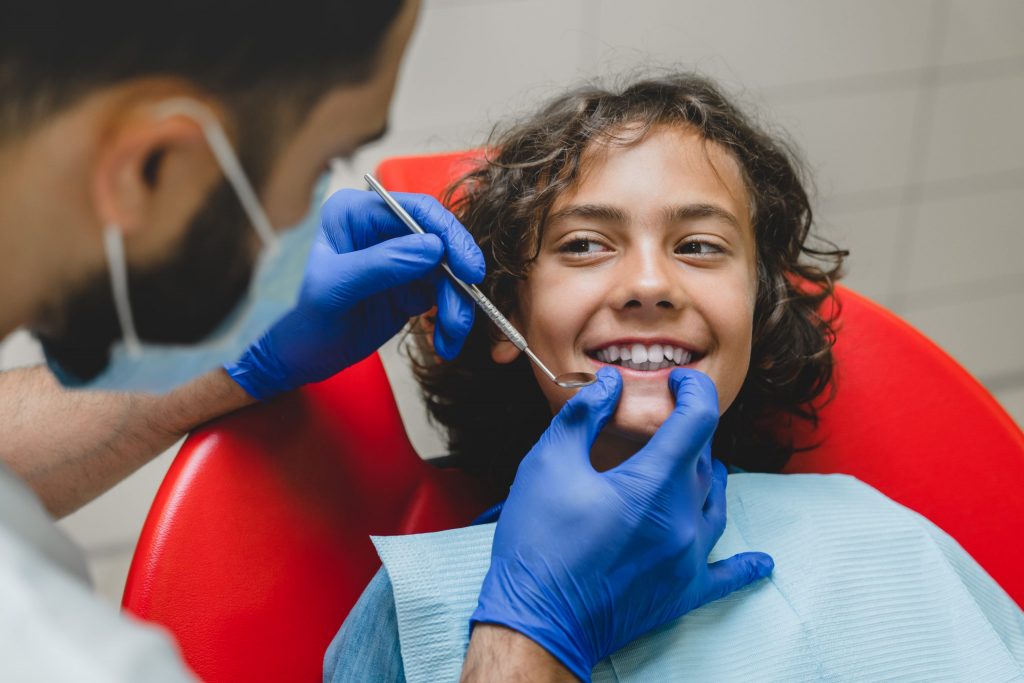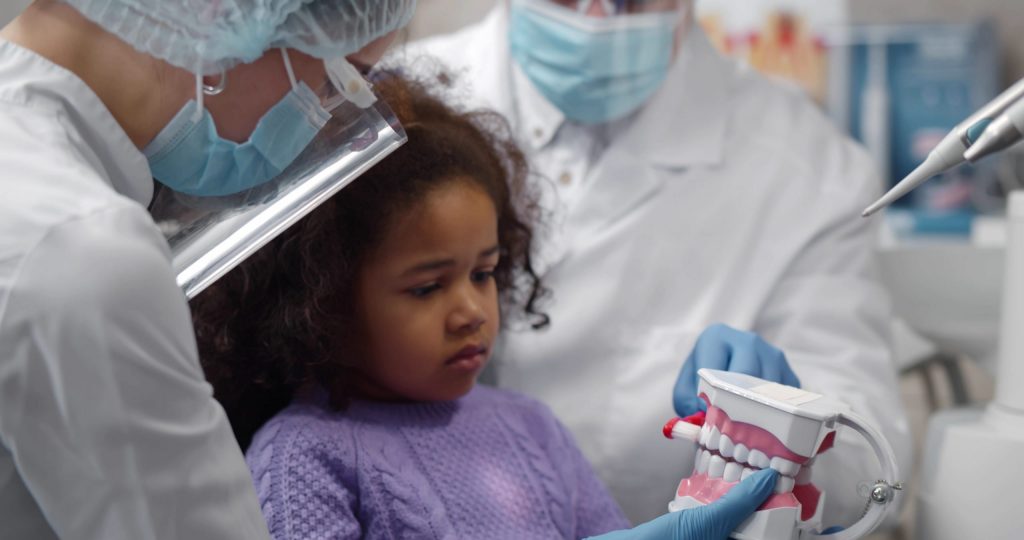
Regardless of age, many people feel upset and anxious when they think about going to the dentist. But pediatric dentist anxiety presents a special challenge.
Among an estimated 9% of children and adolescents, anxiety about dentist visits reaches levels that interfere with their dental care. It may keep them from getting to a dentist’s office at all. Dental anxiety is a problem for these young patients and their dentists, and for parents, guardians, and other adult caregivers who want to see children and youth in good oral health.
At Penn Dental Medicine (PDM), we take seriously the hesitation and fear our youngest patients sometimes feel before and during dental visits. We actively work with them, as we do with all our patients, to put them at greater ease. We don’t want anxiety keeping them from getting the quality oral health care they need and deserve.
What is Pediatric Dentist Anxiety?
Dentist anxiety is more than a simple reluctance to receive examination and treatment. When the anxiety becomes severe, clinicians call it dentophobia or odontophobia—an intense fear of dental procedures or dentists themselves.
Especially among children and adolescents, dental fear and anxiety can lead to feelings of worry, helplessness, panic, resentment, and hatred. It can provoke shivering, crying, and screaming. It can manifest itself in such oral anxiety symptoms as dry mouth, canker sores, and teeth grinding (bruxism). It has even been associated with sleep disorders.
Again, patients of all ages can experience dental anxiety, but it most often develops in childhood. If not addressed and resolved, it could lead to a lifetime of avoiding dental visits. It’s a potentially serious threat to long-term oral and overall health.
What Causes Dentist Anxiety in Children and Adolescents?
Dental anxiety among pediatric patients can stem from several causes. These causes include:

- General shyness or fearfulness.
- Level of cognitive development.
- Specific fears of harm (for instance, a fear of needles).
- Pattern of irregular, infrequent dental visits.
- Unpleasant sensory stimulation in the clinical setting (for example, dental lights, the sound of a dental drill, or the appearance of dental instruments).
- Painful or unpleasant experiences of dentists and dental treatment in the past (including those due to some dentists’ lack of skill or unprofessional manner).
- Negative attitudes toward and fears of dentists and dentistry observed in siblings, peers, or adults.
- Negative portrayals of dentists and dentistry in popular media.
- Worries about dental treatments’ aesthetic outcomes.
Dental Anxiety Management at Penn Dental Medicine
Many factors can cause dental anxiety in children and adolescents. But experienced dentists can also do much to help young patients manage and overcome it.

At PDM, dental anxiety management begins with our commitment to treating pediatric patients in age-appropriate ways. Our dentists are trained to recognize different developmental stages. They take those stages into account when talking with and treating children and adolescents.
Even before your child or young person’s first appointment, we’ll ask questions to assess how much dentist anxiety they may be feeling. This motivational interviewing supports positive behavior changes in patients.
We also make every accommodation we can to ensure your child, tween, or teen becomes more comfortable in the dental office. For example, our very youngest patients can sit on a parent’s lap instead of the dental chair during their evaluation. We might show older patients videos designed to explain some common causes of dental fear, offer reassurance, and demonstrate treatments.
We actively use many nonpharmacological behavior-management techniques to minimize and manage pediatric dentist anxiety. These techniques include:
- Positive Reinforcement: Reinforcing patients’ specific positive behaviors. (“You are so good at keeping your mouth open while I count your teeth—thank you so much!”)
- Distraction Techniques: Keeping patients’ attention focused elsewhere during procedures (for instance, music and video; instructing children to wiggle their toes or raise their hands if they feel discomfort).
- “Tell-Show-Do”: Explaining procedures step by step, including the tools and materials used, beforehand. (“Today we’re going to place sealants on your back molars. Let me show you what we’re going to use.”)
- Modeling: Treating other, older family members first and letting the younger, more anxious patient watch.
If the need is great enough, we can use nitrous oxide, a mild anxiolytic (sedative), to increase patients’ tolerance of dental treatments.
We do not use sedatives casually or indiscriminately, and never simply for our dentists’ convenience. Keeping patients awake and responsive is the most effective way to make them less anxious about and sensitive to dental treatment.
To find out more about how PDM manages and reduces pediatric dentist anxiety, download our free flyer, The Penn Dental Medicine Pediatric Advantage. It discusses how PDM not only deals with dental anxiety in children but also helps them get and stay on the path to lifelong oral health.

